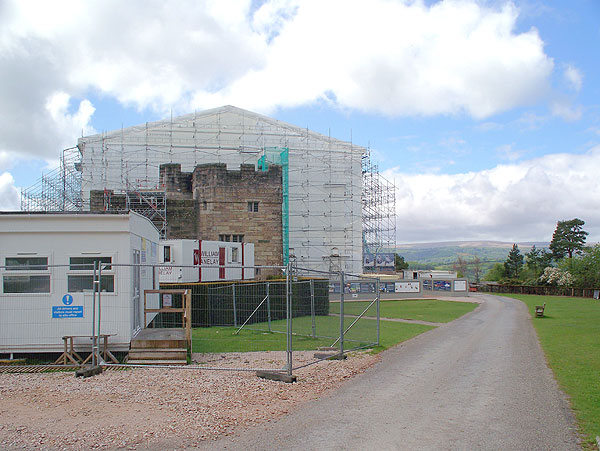 National Trust
National Trust
The castle, built of granite, is in fact a fairly modern construction, designed by Edwyn Lutyens for Julius Drewe, a self-made millionaire and owner of Home and Colonial Stores. It was built between 1910 and 1930.
Inside, there are 1930’s style baronial interiors and family keepsakes. Outside, the house is dramatically sited on high ground overlooking a steep valley. There is a garden, and there are walks along the edge of the gorge.
The house suffers from water penetration, mainly through the flat roofs, whose unconventional asphalt topping was not a success. A further £11 million effort is being launched to fix the intractable leak problem. [£11m! No wonder people are reluctant to buy homes of non-traditional design 🙂 ]
Road access is steep, narrow and bendy.
Revisited May 2015: The roof repair is under way, and large amounts of granite have been removed from roofs and parapets to give access to the failing asphalt. The numerous windows are also being refurbished and given modern sealants. The interior has been cleared of vulnerable contents and access is limited. Some of the accessible rooms contain elements of a special modern art exhibition.
There is a viewing platform on top of the scaffolding giving a view of the roof, but I was not able to go up because of poor weather. However you can get some idea of what is being done by peering out of windows during your tour.
Revisited April 2017. Restoration continuing – first half completed and scaffolding moved to second section. Went up scaffolding for roof visit and view of light wells over kitchen.
The formal gardens are unaffected by the building works, and worth a visit as you return from the castle.
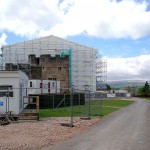
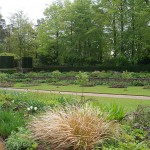
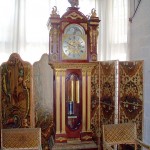

Category: South-west
location
Tyntesfield, Somerset
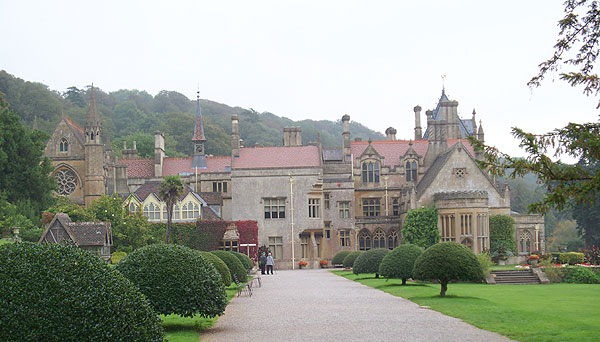
National Trust
An impressive Victorian estate and one of the NT’s more high-profile acquisitions, Tyntesfield is deep in the Somerset countryside. Besides the house and chapel there are gardens and miscellaneous out-buildings, with the inevitable restaurant, shop, café and visitor centre. When acquired, the house was a time-warp and stuffed with period objects. When I visited, the formal rooms were quite impressive, and the service and other rooms that were opened were full of miscellaneous stuff. The Chapel is next to the house but had a separate entrance, which was also used to give access to some rooms in the upper part of the house.
Update: Sept 2014.
Since my last visit, the NT visitor’s entrance has been moved to the service yard, a few more formal and service rooms have been opened on the ground floor, and the upper floor has been opened for visitors. The tour now exits via the Chapel. (My old guidebook shows the Billiard Room, Mrs Gibbs’ Room, and the Old Servants’ Hall as accessible, but they are not on the 2014 tour.)
The central hall, Library, Dining room and Drawing Room are impressively decorated in Victorian style and fully furnished.
Upstairs, approx ten rooms can be visited. These are less impressive than the downstairs rooms, but still interesting, and some are still filled with undisplayed stuff.
The Chapel is the size of a smaller church, and an impressive and colourful example of Victoriana.
In the house, it’s amusing to note that an analog Mitsubishi TV belonging to the last owner has become a NT exhibit. 🙂
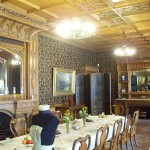

Boscastle, Devon
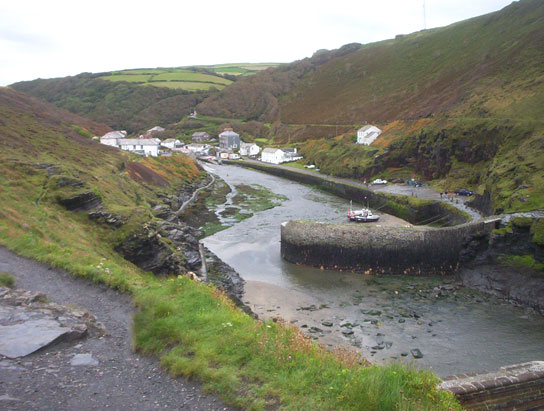
The village is of course famous for nearly becoming an ex-village during a disastrous flood a few years ago. At the village centre you can visit a small museum of the disaster and look at the new bridge and flood prevention works. It’s worth making an effort to tramp further afield, as there are interesting walks down to the harbour mouth (both sides), or if you can find a paper walk guide, you can walk around some hilly old streets looking at old buildings of interest. The harbour largely dries out at low tide.
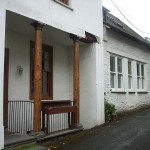
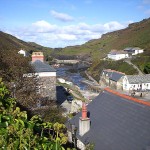
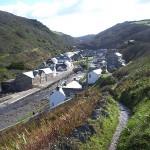
Branscombe Bakery, Manor Mill and Forge, Devon
The mill and forge are in working order, and teas are available in the Old Bakery. The thatched buildings are over 200 years old. The village is quite near to the sea coast. Worth a vsit if you are in the area. If I remember correctly, road access is narrow, twisty, hilly and potentially congested.
Cobbaton Combat Collection, Devon
One man’s collection of over 60 military vehicles, plus weapons and artefacts, crammed into several cluttered buildings. There is also a shop selling collectibles and a working NAAFI canteen.
If you like militaria, this is clearly for you. The items, which include everything from uniforms to tanks, are not restored to pristine condition, but you can imagine that they’ve recently been used. Suggested visit time: 2 hours +
Cotehele, Cornwall
A historic estate on the banks of the Tamar. The Tudor house and its contents have changed little over the years and are well worth seeing. Most rooms have extensive catalogue notes provided. The house has no electricity, so it might be worth bringing your own torch on a dull day to better see objects in some rooms. Many of the rooms are lined with tapestries.
Outside are two orchards, gardens, a folly tower, walks, and a little further off, Cotehele Quay with its museum, and restored Tamar sailing barge Shamrock. Half a mile from the Quay is Cotehele Mill, a working mill.
There is a lot to see in the house in various rooms spread over three floor levels. Around the house are attractive gardens. The triangular folly tower, in a field with inquisitive cows, can be climbed for a view of the surrounding country. The Mill has a working watermill and several displays of old workshops.
There is enough to see to make it an all-day visit. Road access is by narrow twisty hilly roads. It is possible to arrive by water from Plymouth.
For visitors not over keen on walking, a minibus runs between the house, Quay and Mill. It is also possible to park by the house and then move one’s car to the lower car park at the quay. There is a restaurant at the house and another at the Quay.
Crownhill Fort, Plymouth
This is a Victorian Fort built to defend Plymouth from attack. Obsolete for its original purpose, it was later used as a barracks. There is quite a lot to see, with gun emplacements, embankments, tunnels etc. The Fort is owned by the Landmark Trust. Unfortunately it is not open daily to the public, but there are pre-booked tours and events during the year. If you are interested, you should look on the website and book a tour or event. I found it a most interesting place to explore.
My sister just reminded me about this access nightmare – approaching from the north a right turn is required, and it took some time to escape a tangle of looping service roads and get on the other side of the dual carriageway.
(Looking at the digital mapping today, it appears that turning off onto the B3413 Crownhill Road may not work, and you have to continue south to the big A386/A38 roundabout and execute a U-turn. Another possibility is to take an early right turn at the Looseleigh Lane roundabout and then approach circuitously along the B3373.)
Dyrham Park, South Gloucestershire
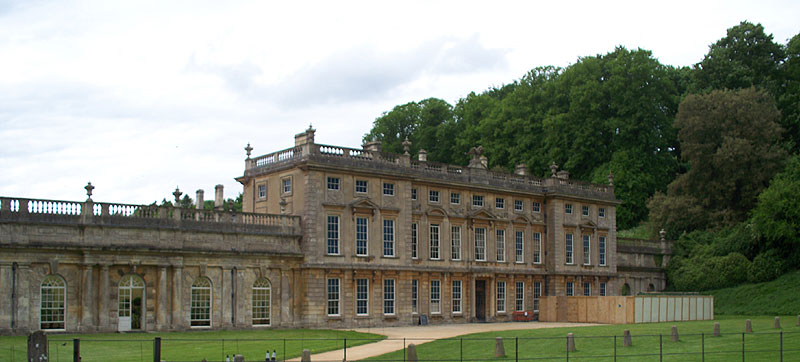 National Trust
National Trust
The grounds are of substantial size and drop dramatically down towards the William & Mary period house, with its long east front. Behind the house there are gardens. The interior is furnished in a Dutch style. The house is worth a visit and besides the main rooms one can look at rooms in the basement, and an orangery. Outside there is a large park, and behind the house some formal gardens with ponds. The church can be visited but the access route was not obvious.
The main car park is next to the road, some 500 yards from the house. The property is only a few minutes drive from the M4, and is a handy break point on journeys to the far south west and South Wales.
Revisited May 2022.
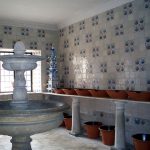

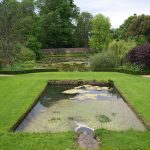

Geevor Tin Mine, Cornwall
Until 1990 this was a working tin mine and major local employer, but now it is preserved as a monument to the Cornish tin mining industry. Some of the machinery was removed for scrap, but much remains. It is now a major exhibit, with a museum and the surface machinery areas open to the public. The preserved site extends over 67 acres. The mineshafts are not open to the public, but within the site you will see a scary looking black hole which is the mouth of one of the vertical shafts. Look out for the model somewhere in the museum which reveals the enormous complexity of the system of shafts and galleries, which extended deep undergoround and under the sea.
There is a guided underground tour into Wheal Mexico, an 18th century mine. This is shallow and mostly horizontal, but authentically twisty and cramped and dank. My sister survived the surface tour but balked at going into Wheal Mexico.
Allow several hours to see everything.
In the surrounding landscape are many relics of earlier mining enterprises, in the form of gaunt engine houses and rubble-strewn ore processing floors.
Museum of Army Flying, Wiltshire.
A specialised subject area, but if you are interested in militaria, there should be plenty to interest you. It contains over 35 fixed and rotary wing aircraft, and various other exhibits. Suggested visit duration: at least 2 hours. The Army Air Corps working airfield is next to the museum.
